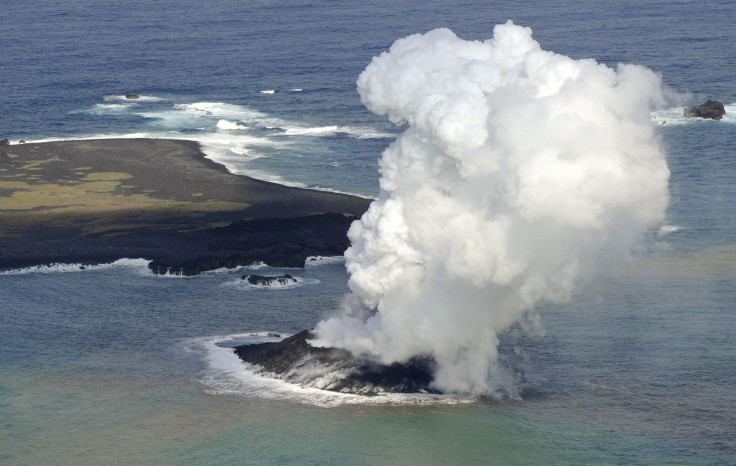Japan’s New Volcanic Island, Niijima, Is Growing And Could Survive For Several Years: Scientists

In late November, volcanic activity 600 miles south of Tokyo gave rise to a tiny island in the Pacific Ocean along the western edge of the “Ring of Fire,” and according to the latest findings, the tiny islet is growing and could survive for longer than previously thought.
NASA’s Earth Observing-1 satellite captured a fresh image of the island, named Niijima, on Dec. 8, which showed that a volcanic eruption is still stirring up sediment around the edges of the island, with faint white puffs streaming southward. In addition to NASA’s observations, aerial photography from the Japan Coast Guard also showed Niijima's expansion, with reports saying that the island has grown 19.8 acres in area, which is five times its initial size.
“As the volcanic eruption is still continuing, we don't know the fate of the island,” Tomoyuki Kano of the Japan Meteorological Agency told AFP. “But it won't disappear in days or weeks, and will probably last for several years ... unless a huge volcanic eruption happens and blows it apart.”

Scientists speculated in the first few days after Niijima’s creation that the tiny island might not last. According to them, new islets like those recently formed off of Pakistan's coast and in the Red Sea can naturally sink back under water as they are eroded by constant wave action, which carries away loose sediment, mud, and tephra, or volcanic rock fragments.
"If it becomes a full-fledged island, we would be happy to have more territory," Yoshihide Suga, Japan's chief government spokesman, said.
But as Niijima is still erupting and growing, scientists now think that the island is large enough to survive for at least several years, if not permanently. The new island sits about a third of a mile from Nishino-shima, another volcanic island that last erupted and expanded in 1973-74. The two islands are located about 80 miles from the nearest inhabited island off Japan's eastern coast.
© Copyright IBTimes 2025. All rights reserved.






















